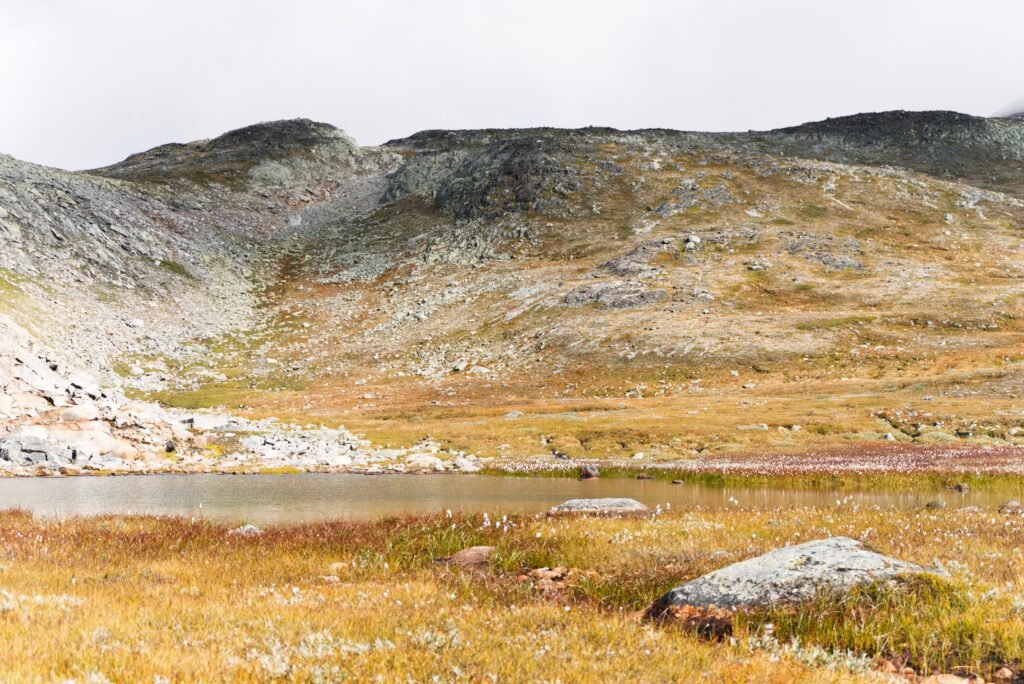Going on a solo hike can be an exhilarating and transformative experience, allowing you to fully immerse yourself in nature and challenge your physical and mental limits. However, it is crucial to prioritize your safety before embarking on this adventure. In order to ensure a secure and enjoyable hike, there are a few essential safety precautions that you should take. By having a well-prepared plan, carrying necessary equipment, informing others of your itinerary, and being aware of potential risks, you can confidently embark on your solo hike, ready to embrace the beauty of the great outdoors.
Hiking Preparation
Before embarking on a hiking adventure, it is important to take the necessary steps to ensure a safe and enjoyable experience. These include researching the hiking trail, checking the weather conditions, notifying someone of your plans, and packing necessary supplies.
Research the Hiking Trail
Take the time to thoroughly research the hiking trail you plan to explore. Familiarize yourself with the distance, terrain, and difficulty level of the trail. This will help you gauge whether it is suited to your skill and fitness level. Additionally, look for any potential hazards or challenges that you may encounter along the way.
Check the Weather Conditions
Weather conditions can greatly impact your hiking experience and safety. Before setting out, check the weather forecast for the area you will be hiking in. Be prepared for changes in weather and pack appropriate clothing and gear accordingly. If severe weather is predicted, it may be best to reschedule your hike for another day.
Notify Someone of Your Plans
Letting someone know about your hiking plans is a crucial safety measure, especially when hiking alone. Inform a trusted friend or family member of your intended route, estimated time of departure, and expected time of return. This way, someone will be aware of your whereabouts and can alert authorities if you fail to check in within a reasonable timeframe.
Pack Necessary Supplies
Properly packing necessary supplies is essential for a safe and comfortable hiking experience. Include essentials such as plenty of water, high-energy snacks, a map and compass, a flashlight or headlamp, extra layers of clothing, a whistle, and a multi-tool. Additionally, consider bringing a lightweight shelter in case of emergencies.
Personal Safety Gear
When hiking alone, it is important to prioritize personal safety by wearing appropriate clothing and footwear, carrying a first aid kit, using a navigation system, and carrying emergency communication devices.
Wear Appropriate Clothing and Footwear
Choosing the right clothing and footwear for your hike is crucial for both comfort and safety. Dress in layers to accommodate changing weather conditions and wear moisture-wicking materials to stay dry. Opt for sturdy and well-fitting footwear that provides proper traction and ankle support.
Carry a First Aid Kit
A well-stocked first aid kit is a must-have item for any hiking trip, especially when hiking alone. Include items such as adhesive bandages, sterile gauze pads, antiseptic wipes, pain medication, blister treatment, and any personal medications you may require. Familiarize yourself with basic first aid procedures before your hike.
Use a Navigation System
To avoid getting lost during your hike, it is essential to use a navigation system. This can be a map and compass, a GPS device, or a smartphone with reliable offline maps. Familiarize yourself with how to use these tools effectively before your hike, and carry backup batteries or a portable charger to ensure your navigation system remains functional.
Carry Emergency Communication Devices
When hiking alone, having a reliable way to communicate with the outside world is crucial in case of an emergency. Carry a fully charged cell phone, but be aware that there may not always be service in remote areas. Consider investing in a personal locator beacon (PLB) or a satellite phone as backup options.
This image is property of images.unsplash.com.
Physical Fitness and Health
Assessing your physical fitness level, understanding your limitations, and carrying necessary medications and allergies information are vital aspects of ensuring a safe and healthy hiking experience.
Evaluate Your Physical Fitness
Before embarking on a challenging hike, honestly assess your physical fitness level. Consider factors such as endurance, strength, and mobility. If necessary, engage in regular physical activity and gradually increase your fitness level before attempting more strenuous hikes.
Understand Your Own Limitations
Knowing your limitations is crucial for avoiding potential injuries or health issues during a hike. Be realistic about your abilities and choose hiking trails that are appropriate for your skill level. Listen to your body and take breaks whenever you need to, pacing yourself according to your comfort and fitness level.
Carry Medications and Allergies Information
If you have any existing medical conditions or allergies, it is important to carry the necessary medications and inform others about your health concerns. Pack an adequate supply of any required medications and ensure they are easily accessible. It may also be helpful to wear a medical alert bracelet or provide emergency contacts with detailed information about your health conditions.
Navigating the Trail
When hiking alone, it is essential to stay on marked trails, be aware of your surroundings, use natural landmarks for orientation, and practice map reading and compass skills.
Stay on Marked Trails
Straying off marked trails can increase the risk of getting lost or encountering hazards. Follow the designated paths and pay attention to trail markers or signs. Deviating from established trails can lead to environmentally sensitive areas being damaged and may even put you in dangerous situations.
Be Aware of Surroundings
Stay vigilant and be aware of your surroundings at all times. Pay attention to changes in the landscape, potential hazards, and wildlife activity. Being observant can help you anticipate challenges and react accordingly.
Use Natural Landmarks for Orientation
Nature provides an abundance of natural landmarks that can be used for orientation purposes. Take note of distinctive features such as rock formations, trees, streams, or mountains. These can serve as reference points to ensure you stay on the right track.
Practice Map Reading and Compass Skills
Having the ability to read maps and use a compass is a valuable skill for every hiker, particularly when hiking alone. Familiarize yourself with topographic maps, trail maps, and compass usage. Practice these skills in familiar terrain before venturing into more challenging areas.

This image is property of images.unsplash.com.
Wildlife Safety
Being knowledgeable about local wildlife, researching local predators, carrying bear spray or deterrent devices, and properly storing food and smelly items are vital precautions for minimizing encounters and ensuring your safety.
Research Local Wildlife
Before embarking on a hike, research the local wildlife species you may encounter. Understand their behaviors and habits, and learn how to respond appropriately in case of an encounter. This knowledge will help you mitigate potential risks and act responsibly in wildlife-rich areas.
Be Knowledgeable About Local Predators
Different regions have their own unique predators, so it is important to research and understand the local predator population. Familiarize yourself with their habitat preferences, signs of their presence, and appropriate response strategies. This knowledge will help you make informed decisions and reduce the likelihood of a negative wildlife encounter.
Carry Bear Spray or Deterrent Devices
In areas where bears or other potentially dangerous wildlife are present, carrying bear spray or deterrent devices is essential. Learn how to use these tools effectively before your hike and ensure they are easily accessible. Practice using bear spray in a safe and controlled environment to build confidence.
Store Food and Smelly Items Properly
Properly storing food and other smelly items is crucial for preventing wildlife conflicts. Use bear-resistant containers or hang your food and scented items from a tree branch, away from your campsite. This will discourage wildlife from approaching and reduce the chances of unwanted encounters.
Water Safety
Water is essential for any hiking trip, so it is important to carry enough water, filter or purify water sources, be cautious when crossing streams or rivers, and avoid water contamination.
Carry Enough Water
Staying hydrated is crucial when hiking, particularly in remote or arid areas. Carry enough water to last the duration of your hike, accounting for factors such as temperature, intensity of physical activity, and potential delays. As a general rule, aim to consume at least half a liter of water per hour of moderate hiking.
Filter or Purify Water Sources
If you need to replenish your water supply from natural sources, it is essential to filter or purify the water to make it safe for consumption. Invest in a reliable water filtration system or carry water purification tablets. Avoid drinking directly from stagnant or questionable water sources.
Be Cautious When Crossing Streams or Rivers
When encountering streams or rivers during your hike, exercise caution and assess the conditions before attempting a crossing. Fast-flowing water can be hazardous, especially after heavy rainfall. Look for safer crossing points and use additional tools, such as trekking poles, to maintain stability.
Avoid Water Contamination
To protect water sources and minimize environmental impact, avoid contaminating water with pollutants or personal care products. Dispose of waste properly and follow Leave No Trace principles when using water sources. This ensures that others can enjoy clean and pristine water in the future.

This image is property of images.unsplash.com.
Emergency Situations
While nobody plans for emergencies, it is crucial to be prepared for injuries or illnesses, know how to signal for help, and stay calm while assessing the situation.
Learn Basic First Aid Skills
Having basic first aid knowledge can make a significant difference during emergencies. Familiarize yourself with essential first aid techniques, such as treating cuts, sprains, burns, and insect bites. Consider taking a wilderness first aid course to gain more in-depth knowledge and confidence in handling potential emergencies.
Be Prepared for Injuries or Illnesses
Carry a comprehensive first aid kit that includes items for treating a range of injuries and illnesses. This may include bandages, sterile dressings, antiseptic ointment, painkillers, and any necessary medications specific to your health needs. Additionally, consider carrying a compact emergency blanket for providing warmth and shelter in case of unexpected overnight stays.
Know How to Signal for Help
In the event of an emergency, knowing how to signal for help is crucial. Carry signaling devices such as a whistle or a mirror to attract attention. Additionally, familiarize yourself with distress signals such as shouting or using three loud blasts on a whistle. Learn the universal SOS distress signal (three short, three long, three short) for emergency communication.
Stay Calm and Assess the Situation
When faced with an emergency, it is natural to feel overwhelmed. However, staying calm and composed is key to making sound decisions. Take a moment to assess the situation, prioritize your actions, and remain focused. Engaging in deep breathing and grounding techniques can help calm your mind and enhance your problem-solving abilities.
Time Management
Effective time management ensures a smooth and safe hiking experience. Plan your time wisely, start early to allow for daylight, avoid hiking in darkness, and be prepared for delays or unexpected events.
Plan Your Time Wisely
Before setting out on a hike, create a realistic itinerary that takes into account the distance, terrain, and estimated time required to complete the trail. Factor in rest breaks, meal breaks, and contingency time for unexpected delays. Planning your time wisely will help you maintain a comfortable pace and prevent unnecessary rush.
Start Early and Allow for Daylight
Starting your hike early in the day offers several advantages. It allows you to make the most of daylight hours, providing better visibility and reducing the risk of having to navigate in darkness. Starting early also gives you ample time to complete your hike without feeling rushed.
Avoid Hiking in Darkness
Hiking in darkness significantly increases the risks associated with navigation, terrain assessment, and potential injuries. It is best to finish your hike before sunset. If unexpected delays occur, ensure you have adequate lighting such as a headlamp or flashlight to safely navigate during low light conditions.
Be Prepared for Delays or Unexpected Events
Even with careful planning, delays and unexpected events can occur during a hike. Prepare for contingencies by carrying extra food, water, and emergency supplies. By anticipating unforeseen circumstances, you can reduce stress and adapt to changing situations without compromising your safety.
Environmental Considerations
Respecting the environment and minimizing your impact on the natural surroundings is a responsibility every hiker should embrace. Practice Leave No Trace principles, respect wildlife and their habitat, minimize noise and disturbances, and dispose of waste properly.
Practice Leave No Trace Principles
Leave No Trace is a set of ethical guidelines that promote responsible outdoor behavior. Adhere to these principles by leaving natural areas as you found them. Pack out all trash, minimize campfire impacts, respect wildlife and plants, and stay on designated trails to prevent unnecessary damage to the environment.
Respect Wildlife and Their Habitat
While encountering wildlife may be an exciting experience, it is important to observe animals from a safe distance and not disturb their natural behavior. Respect their habitat by avoiding activities that may cause stress or harm. Do not feed wildlife, as it can alter their natural behaviors and create potential dangers for both humans and animals.
Minimize Noise and Disturbances
When hiking, strive to minimize noise and disturbances that can disrupt the tranquility of the natural environment. Keep your voice down, turn off or lower the volume of electronic devices, and avoid unnecessary impacts on the surroundings. By cultivating a sense of peace and serenity, you can fully immerse yourself in the beauty of nature.
Dispose of Waste Properly
Dispose of waste in a responsible manner to minimize environmental impact. Carry a small sealable bag for collecting trash and carry it with you until you reach a proper waste disposal facility. If nature calls, dig a cat hole at least six to eight inches deep and bury human waste away from water sources and trails. Proper waste disposal ensures the preservation of the natural environment for future generations of hikers.
Hiking Alone vs. Group Hiking
Deciding whether to hike alone or with a group is a personal choice that requires careful consideration. There are advantages and disadvantages to both options, so it is important to evaluate your skills and experience, consider joining hiking groups or clubs, and inform others about your solo hike.
Consider the Advantages and Disadvantages
Hiking alone offers the freedom to set your own pace, explore at your leisure, and experience solitude in nature. It allows for self-reflection and personal growth. However, hiking alone also means taking on the responsibility of navigation, safety, and emergency response without immediate support.
Group hiking provides the benefits of shared experiences, safety in numbers, and shared responsibilities. It offers opportunities for social interaction and can enhance the feeling of security. However, group hikes may require compromise and coordination with others, and the pace of the hike may be influenced by the group dynamics.
Evaluate Your Skills and Experience
Assess your hiking skills, physical fitness, and level of outdoor experience before deciding whether to hike alone or with a group. Consider factors such as navigation skills, first aid knowledge, wilderness survival skills, and self-reliance. If you are a relatively inexperienced hiker or lack confidence in certain areas, it may be beneficial to choose group hikes or seek guidance from more experienced hikers.
Join Hiking Groups or Clubs
To enhance your hiking experience and safety, consider joining hiking groups or clubs in your area. These organizations often offer group hikes, education sessions, and opportunities to connect with experienced hikers. By hiking with others, you can learn valuable skills, gain confidence, and establish connections within the hiking community.
Inform Others About Your Solo Hike
If you choose to hike alone, it is important to inform others about your plans. Share your hiking itinerary with a friend, family member, or fellow hiker, providing details such as your planned route, expected time of departure, and estimated time of return. Regularly check in with your designated contact person during the hike to keep them updated on your progress and well-being.
Taking the necessary safety precautions when planning a solo hike is essential for a successful and enjoyable experience. By researching the hiking trail, wearing appropriate clothing, carrying essential safety gear, and practicing good environmental stewardship, you can ensure a safe and memorable adventure in the great outdoors. Remember, your safety is always the top priority, so prepare accordingly and enjoy your solo hike with confidence.
Hi there! I’m the Editor, experienced outdoor development specialist, mountaineer and the mind behind ‘Country Rambler.’ I’m thrilled to welcome you to our website, your go-to destination for all things hill walking and rambling. Whether you’re an experienced adventurer or just dipping your toes into the great outdoors, I’ve got you covered. From providing guidance on essential gear, like boots and jackets, to sharing trail tips that range from peaceful paths to challenging peaks, I’ve got everything you need to embark on your next adventure. Stay in the loop with our fresh news updates and trail information. So, lace up those boots and join me as we explore the breathtaking landscapes together. Happy wandering!



